The ministry of welcome: Lovefeast loaf, bread church, curries, saffron buns and more
31 March 2021
31 March 2021
For many people the pandemic has meant more home cooked food but far fewer social meals. Church communities have continued to enjoy a chat over coffee and biscuits on Zoom after online worship but church teas or harvest suppers have not been part of the calendar. We thought this was a good opportunity to celebrate some of the recipes and stories around Methodist Church foodie get togethers and hopefully before too long these events will make a welcome return.
We put out requests via social media and our Connexional team intranet and were inundated with recipes and food memories. Methodists clearly love their grub!
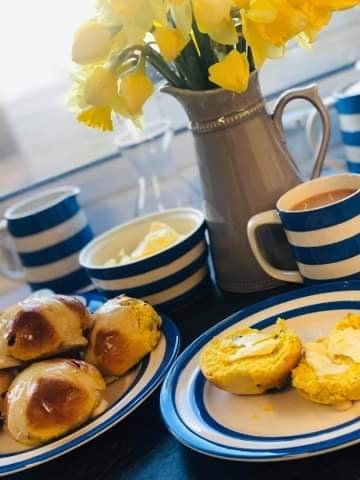
Cornish saffron buns, credit: Cara Rule and Mark Osborn
The celebration of Easter is a time that many enjoy baking seasonal goodies. In Cornwall the saffron bun was traditionally a treat for Sunday school picnics at Easter and Whitsun. You can still buy these colourful breads in Cornwall (the saffron bun at the top of this blog being from the St Mawes Bakery). In his recent TV series, Rick Stein showed viewers how to make saffron buns.
On the subject of Cornish Methodist teatimes, the Revd Gareth Hill says, “In Cornwall it will always include pasties, scones with jam and cream (jam first, of course). Then Berylware tea cups only half-filled so you don't spill any ... but you can always come back for more!”
Of course the flour would need to be Rank Hovis MacDougall, the jam would need to be Hartley’s and the cream Rodda’s, all companies founded by Methodists, Joseph Rank, William Pickles Hartley, and Eliza Jane Rodda.
At this time of year many churches hold love feasts. There are numerous traditional love feast loaf recipes which had local variations. This blog has a number of recipes from across Yorkshire.
Easter story cookies is a recipe to follow with young children that has been suggested by Adrian Roux, one of our Regional Learning and Development Officers. They should be prepared the night before Easter - as the spiritual preparation goes along with the physical preparation of the cookies. You can find a recipe for these here.
Carolyn Lawrence has an award winning food story to share involving her apple pie recipe,
I first ate this pie in the early ‘90s at our annual church New Year party when our then minister's wife made it for the ‘bring and share’ supper. The church I attended always had a party in January and each year picked a theme - everyone would dress up accordingly and bring related food and then we would all take part in offering home spun entertainment. That year's theme was Victorian music hall!We loved the pie so much I asked her for the recipe and it quickly became a family favourite - so much so my elder daughter still asks for one for her birthday instead of a cake!Then around 2012 I used the recipe to enter a National Trust Autumn windfall recipe competition which I won! The pie was made that autumn across National Trust properties in their cafes and restaurants. My prize was two tickets for admittance to a National Trust property which I couldn't use as we were about to fly off to be mission partners in Guyana. So it felt fitting to give the tickets to my friend from whom I had got the recipe originally!
Pastry:
Rub butter into flour until it resembles fine breadcrumbs. Stir in icing sugar. Add egg and enough water to make a dough. Roll out and use to line a large 25cm diameter (around 5cm deep) flan dish (or you can make two small pies in 18cm flan dishes). |
Crumble:
Rub butter into flour to form fine breadcrumbs. Stir in caster sugar. Sprinkle half the crumble mix into the pastry case and keep the rest aside. |
Filling:
Arrange apples onto crumble, sprinkle over the raisins and pour the cream evenly over the top. Top with remaining crumble then stir together 50g caster sugar with 1-2 tsp sauce ground cinnamon and sprinkle over the top. Bake at 200 degrees for about 40 mins until bubbling and golden. Can be frozen. |
Our President, the Revd Richard Teal’s favourite Methodist food memory is drop scones,
Once a year in the village where I lived as a young person the Methodist Chapel held an annual tea party. On one occasion I went with some friends and that was the first time I tasted what were called in that part of Yorkshire 'Drop Scones', known elsewhere as Scotch Pancakes. I can still remember tasting them for the first time with fresh butter. They were scrumptious. I have loved them ever since.
Ingredients
|
Instructions
|
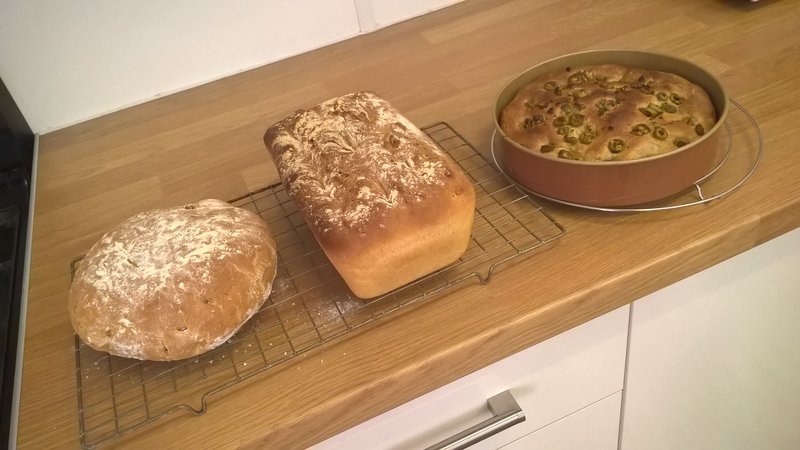
Photo credit: Tricia Mitchell
Tricia Mitchell, Regional Learning & Development Coordinator for the North East contacted us about bread making, inspired by the Bread Church,
A favourite memory of our North East Pioneer Community of Practice is the day we made bread together. Inspired in part by Barbara Glasson’s story of the Bread Church in Liverpool, we gathered one morning in a church in Sunderland to mix and knead, talk and reflect.There are natural rhythms of busyness and resting as you create dough and allow it to rise, shape and prove your loaf, cook and eat. We talked of many things as we worked. In the pauses we reflected together on the place of bread in our lives and in the story of our faith. Of course at the end with the smell of fresh bread tempting us on we shared soup and bread in abundance, a reminder of God’s grace and goodness in our delight when even our gluten-free bread rose to occasion! A happy morning and a good lunch and then back out into the world to be salt or yeast.
Of course to go with the bread you may need a delicious bowl of soup. At the appropriately named East Leake Methodist Church in the Loughborough Circuit, their regular soup and roll lunches include spiced parsnip, spinach and courgette, or a Welsh cowl for their members from Wales.
Over the decades many churches have published cook books as part of their fundraising. One such is the 1913 collection from Hawes Methodist Bazaar. This includes the delightfully named Angels Whispers submitted by a Mrs Hiscock.
Photo credit: Hawes Methodist Bazaar, credit: Marie Tanton
We’ve been sent a selection of covers of some other cook books including the Mottram St Andrew pudding collection based on their annual dessert tasting competition and the Feock Chapel cook book (with the obligatory quiche on the cover) that was published to mark the church’s 150th anniversary.
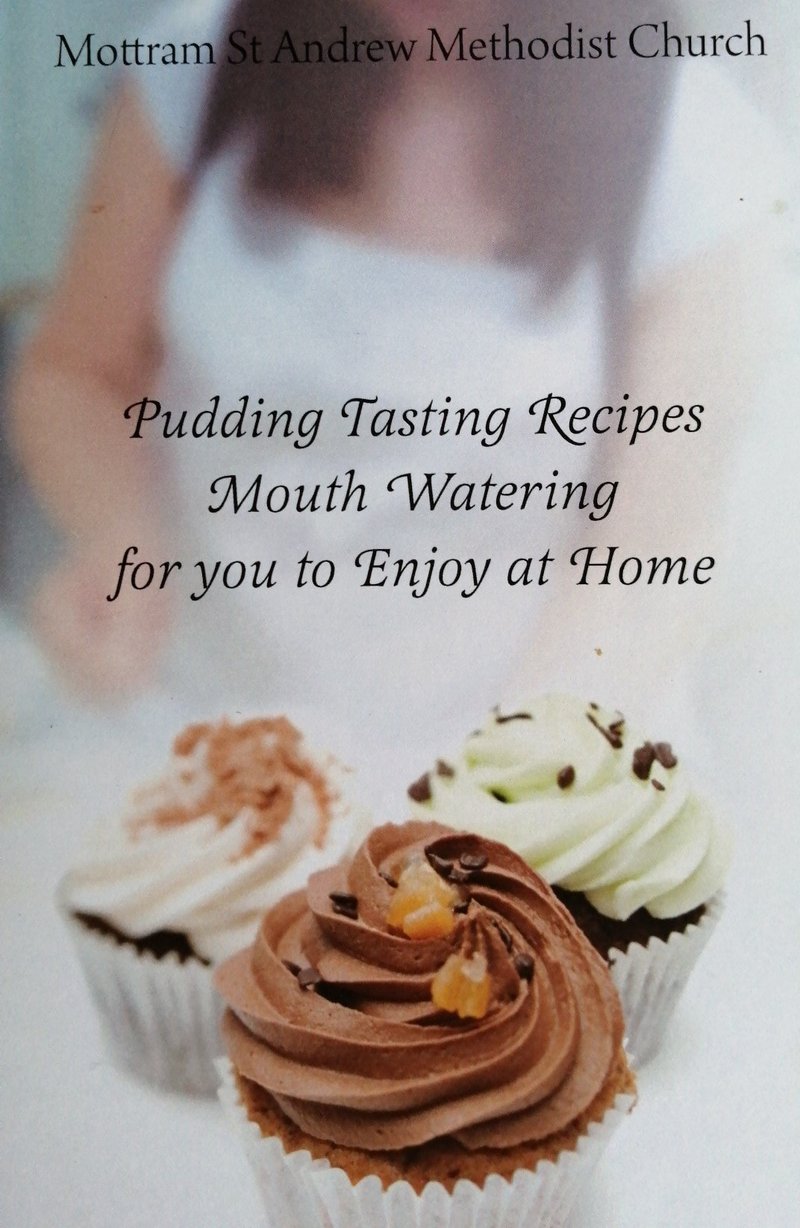
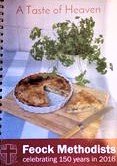
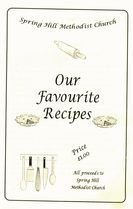

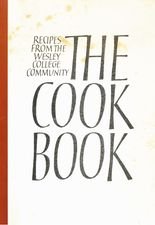
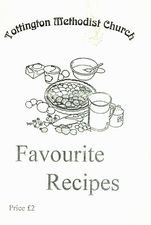
Photo credits: Margaret Graham; Andy Dye, Stuart Smith, Debs Brazier
Our colleagues at the John Ryland’s Library in Manchester sent us details of a household book dating from 1833, owned by Betsey Westhead who along with her husband, Joshua Proctor Westhead, was a prominent Manchester Wesleyan Methodist. There are approximately 50 culinary, medicinal and household ‘receipts’ or recipes, some with a notes of their relative deliciousness or from whom they had originated. They include: 'Calves Foot Jelly - Mrs Tootal', 'To Preserve Cucumber... Robert Owen', 'Almond Pudding'; 'Currant Bread Cake - excellent Mrs. Wynn'; 'Tea Cakes - Mrs. Jellicoise'; 'Rhubarb Wine Mrs. Jones Sheffield'; 'Soda Cake'; and 'Delicate Biscuits'.
One of the researchers at the Library has transcribed some of the recipes – and went to the trouble of baking them including Almond Pudding.
Back to this century we have been sent a copy of the 2021 St Andrew’s, Beeston Church Annual which combines recipes, local interest articles and some quizzes. We’ve included a delicious looking recipe from Edna Gardner – Mem’s Sponge Pudding.
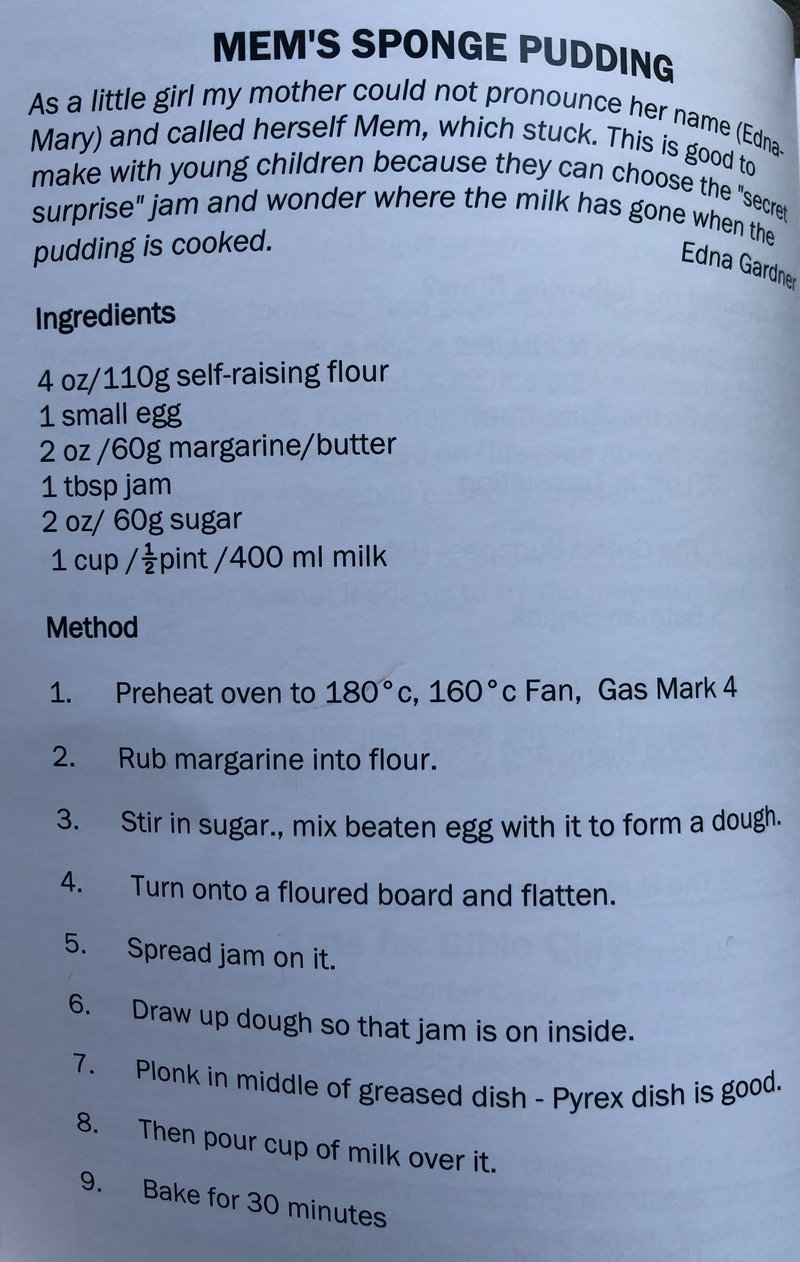
With thanks to Debs Brazier
Cleary memories of food shared at Church occasions can last a long time! Tim Lucas told us about his childhood Sunday School food memory,
At Standish Methodist Church in Lancashire Auntie Florrie’s potted meat sandwiches will be very well remembered by all Sunday School attendees - we used to have competitions to see how many we could eat. Wish I had a recipe for them!
Linda White reflected on how church food has changed as communities became more diverse,
When I grew up in Brixton (I'm 71 now) it was sausage rolls for teas. But then it changed to curried goat for hot meal and a beautiful coconut cake. When my father died a coach party came from Brixton with an enormous coconut cake. The ladies from Addington Methodist all asked for the recipe for the cake so the ladies from Brixton went home and reduced the amount of ingredients to a normal sized cake.
I remember a faith tea in the 70s when some feta cheese was brought. Such stuff was relatively unknown in rural East Yorkshire in those days and someone had labelled it Manna.
No church tea at my home churches were complete without my mum’s Lincolnshire cheesecakes, a recipe handed down in my father’s family, I believe.

The Westminster College ladle, credit: Oxford Brookes University
When we asked our friends at Oxford Brookes who look after the archives from Westminster College whether they had any food related items, we were not expecting to be sent a photo of an actual piece of College pudding dating from 1890! But there it was, mounted on a display board for hanging on a wall, emblazoned with the crest of the City of Westminster. We have decided not to share the image as it isn’t hugely appealing. But we can share a picture of the elegant College ladle which dates from a similar time.
A wise and gentle recipe for ‘Making and Preserving Friends’ from Mrs E Allen.
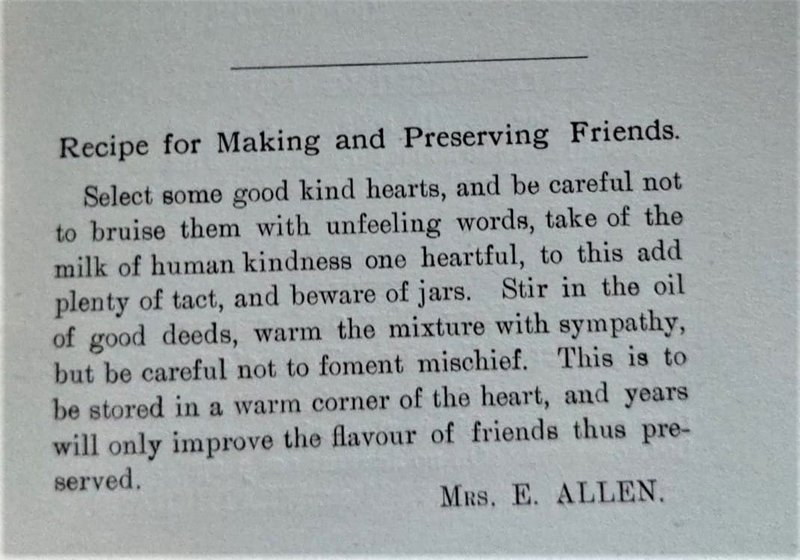
Anna McCrum, Senior Communications Officer for the Methodist Church.